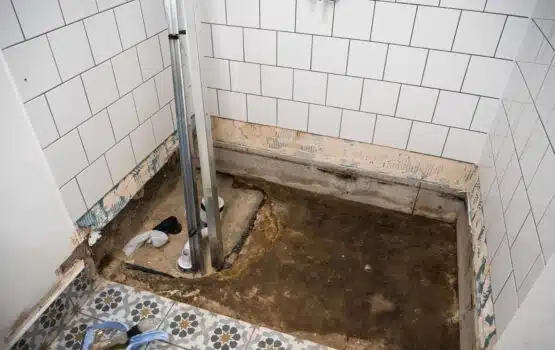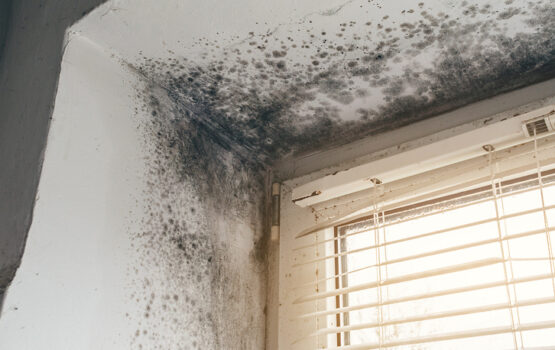Spalling Concrete, What Is It Really?
Spalling concrete is very common in buildings, especially those located in coastal areas. Improper maintenance can lead to this as well as further damage, which can affect the structure of a building. Consequently, this can cause a collapse or the slow deterioration of the structure.
In this post, we’ll talk about what causes concrete spalling, including the common areas which tend to appear, what to do to avoid bigger damage and more. We also include information about recommended services offered by professionals that can aid.
What Causes Concrete Spalling?
Concrete spalling is the condition in which concrete starts to crumble or deteriorate. Concrete flaking, cracking, and crushing, as well as bubbling or rust stains on the concrete, are common signs of concrete spalling in walls.
When concrete is left uncoated and subjected to severe weathering, or when reinforcing steel is placed too close to the edge of a concrete slab, concrete spalling can appear.
As concrete structures erode due to excessive chloride levels in the environment (which is quite prevalent in coastal areas), concrete spalling occurs. There are many reasons why concrete spalling can appear, including improper finishing techniques, electrochemical reactions, corrosion due to water exposure, deterioration caused by the freeze-thaw cycle, and more.
If left unchecked, concrete spalling can cause significant structural degradation, necessitating extensive and expensive repairs. Diagnostic testing, as well as maintenance planning, are essential to prevent concrete spalling from happening as well as expanding to the remaining structure.
What Causes Spalling Concrete?
In this part, we’ll talk about the factors mentioned above more in depth so you can have a clear picture of how fast spalling concrete can appear and start damaging a building.
To begin, improper finishing techniques are considered one of the most common causes of spalling concrete.
The freeze-thaw cycle refers to the process in which water penetrates the concrete, freezes, and later expands, leading to increased pressure. Over time, this can result in parts of the material breaking off.
Chemical reactions can also cause spalling concrete, such as the case of the common alkali-silica reaction. Reactive silica in the concrete structure, such as aggregates, and alkaline cement pastes, generate high pressure inside the concrete, which has a tendency to swell.
Common Building Areas That Tend To Develop Spalling Concrete
There are building parts and areas that are more prone to develop concrete spalling and will need higher maintenance planning and proper concrete spalling repairs according to the type of damage caused.
Mainly, spalling concrete affects bridges, framed buildings, multi-story car parks, and similar. The exterior part of a building is the one that will become more affected by concrete spalling due to the interaction with moisture and debris that can pass by.
If the building is not properly water-proofed, water can easily track within the concrete matrix and start corroding reinforcing bars. For example, doorframes and below windows, and balconies are common areas where water tends to leak and damage concrete.
When the building is located in coastal areas, more damage can be done in a short period of time. This is why maintenance planning and creating a technical specification can come in handy in terms of preventing concrete spalling from developing in the first place and having quality repair options.
What Is Maintenance Planning & Why It Matters
Maintenance planning, as the name gives away, refers to the process of identifying which assets or locations within a facility need to be maintained, how to do it and how often.
Maintenance planning is highly efficient and a great option to save money, thus reactive maintenance can become very expensive. This is known as the type of maintenance done when a facility/building is already damaged. For example, when parabolic prorogation at the initiation phase of concrete spalling appears.
Apart from this, it is essential to create a technical specification to conduct repair works to ensure that guarantees are given and work is completed properly and certify structural adequacy.
The Importance Of Remedial Engineers For Maintaining & Repairing Spalling Concrete
Contacting remedial engineers to check the state of a building or area is crucial to keep a building and its people safe. Further, engaging with an experienced team of remedial engineers can ensure you’re doing repairs in compliance with the rules and regulations established, and with proper materials.
Remedial engineers can also formulate a technical specification and a maintenance plan, which specifies timing, materials and methodologies of repairs which will make the repairing and maintenance process easier in the future.
Overall, remedial engineers can help you with everything you might need about maintaining a building in optimal conditions, following regulations, and avoiding further damage.
MJ Engineering Can Assist
MJ Engineering Projects offers high-quality concrete spalling repairs services in Sydney while utilizing the most recent technology and understanding all problems relating to concrete that can be affecting your structure.
MJ Engineering Projects is prepared to assist you in determining the cause of damage and provide the best course of action that won’t cost you a fortune. We offer top-notch, inexpensive, and efficient solutions for concrete spalling and other issues.
For a detailed look at our methodology, please see this page about our concrete spalling repairs services. Further, check out our technical specification services for a detailed evaluation.
MJ Engineering Projects can help if you require a qualified team to evaluate the state of your building and serve as a remedial superintendent on your behalf in order to mediate between the contractor and you in order to oversee the scope of work. See our remedial superintendent services and learn how we may assist you.
Contact us for more information about how we can help you. Our team will be happy to clear any doubts you may have.


